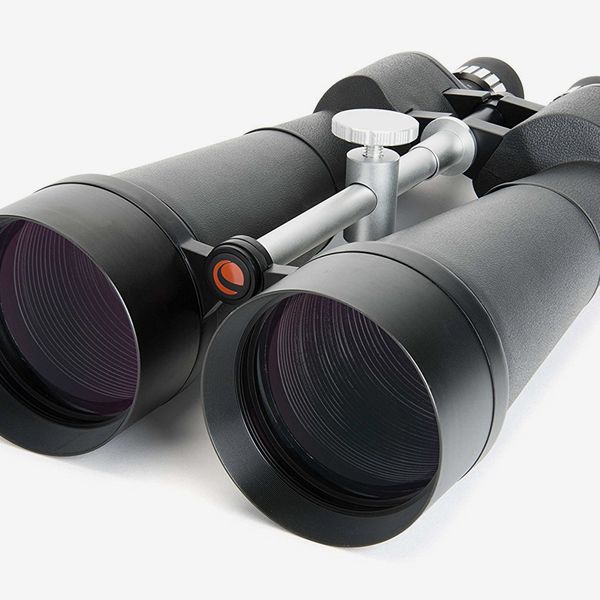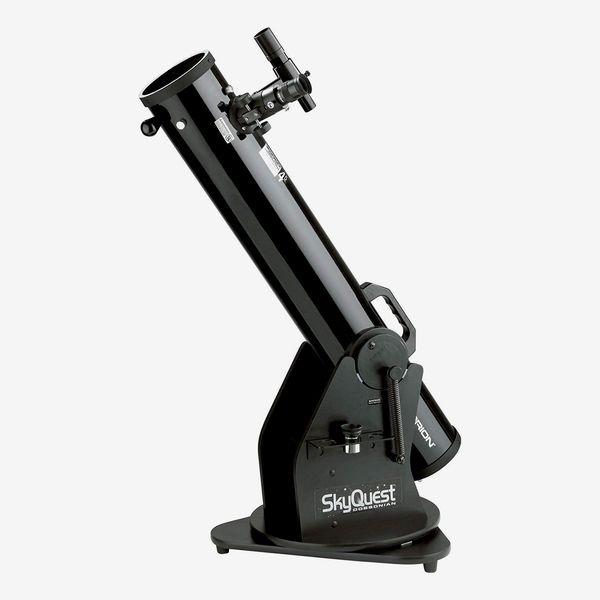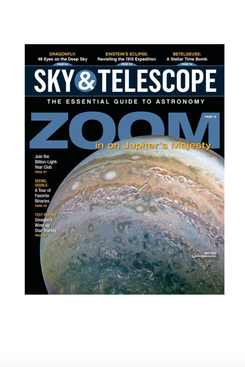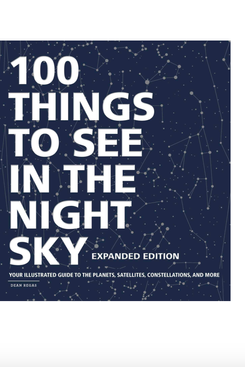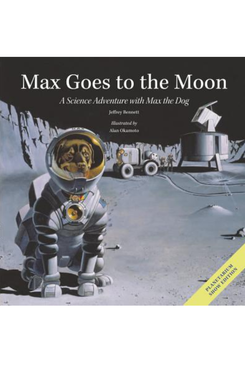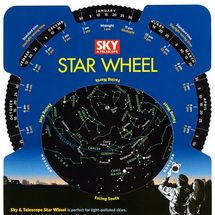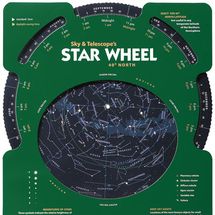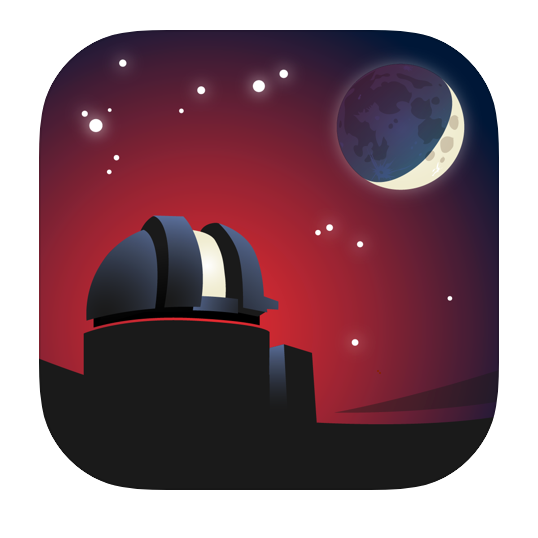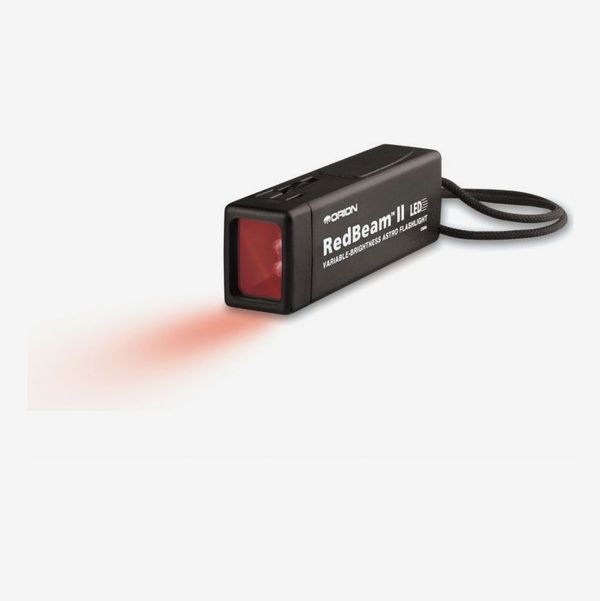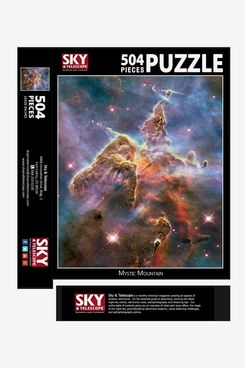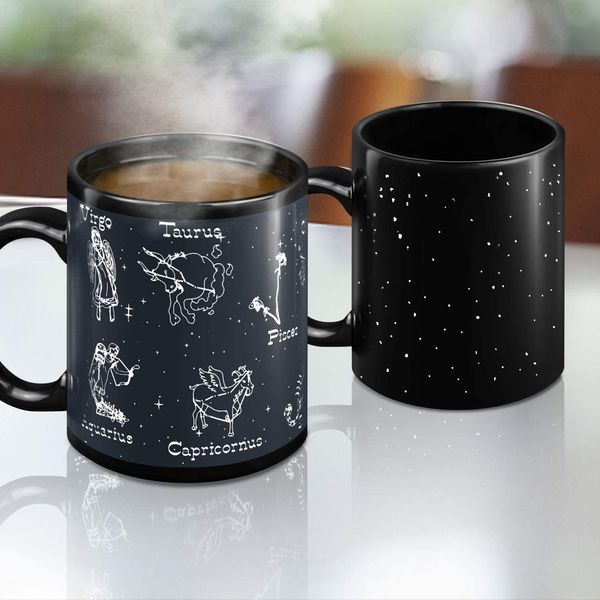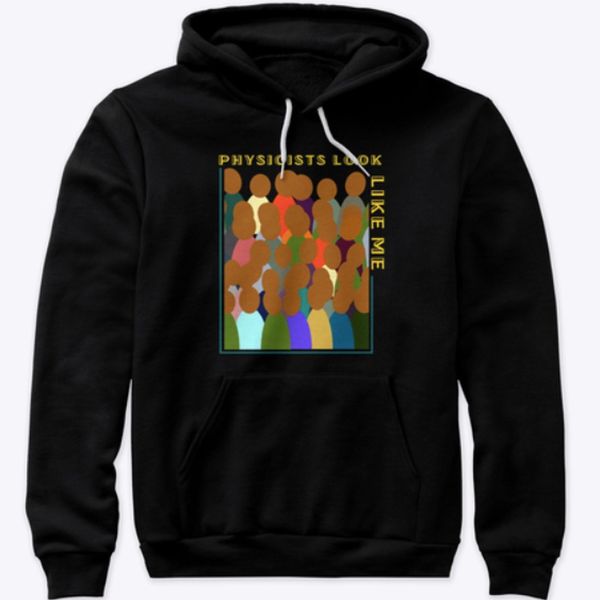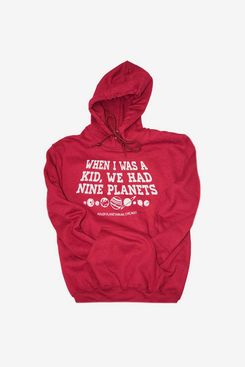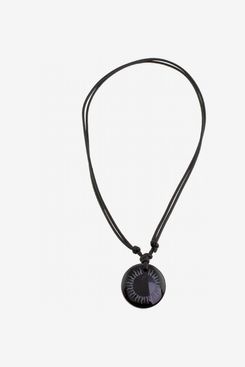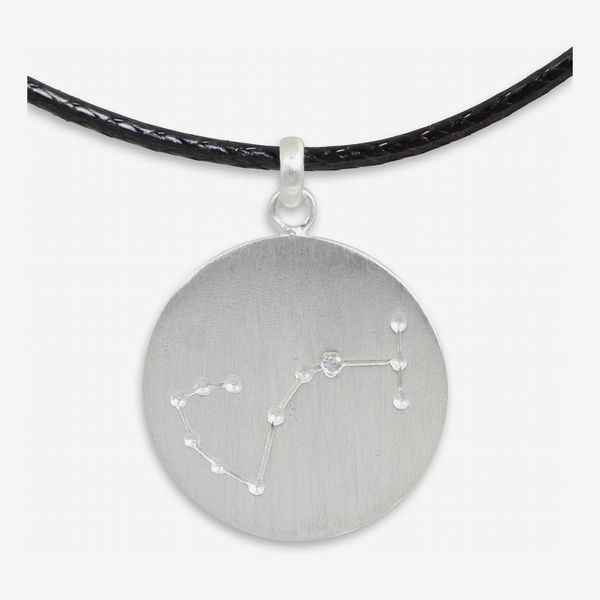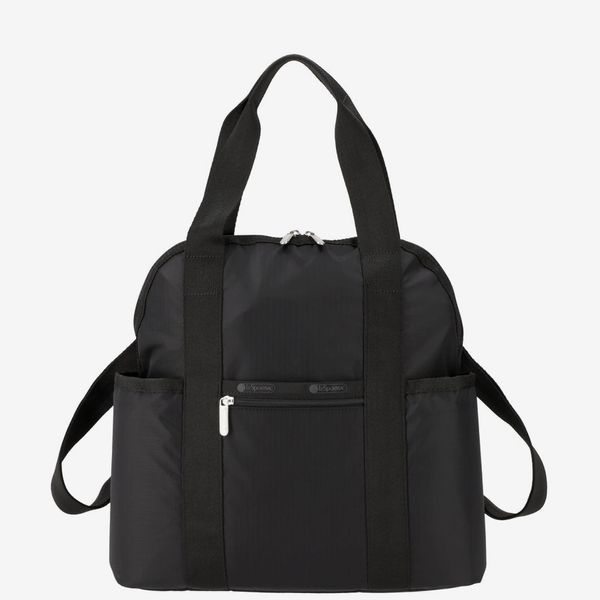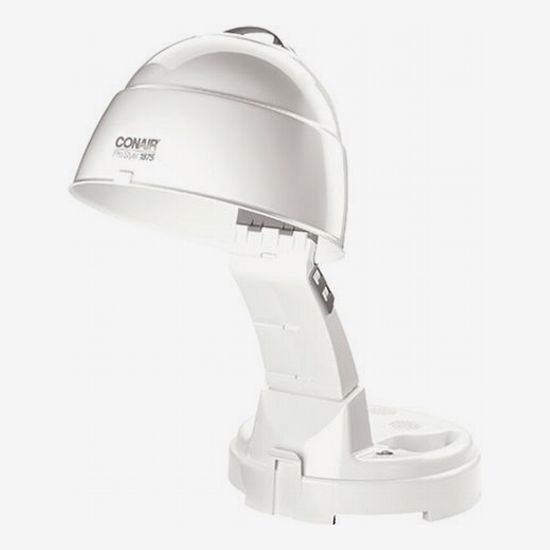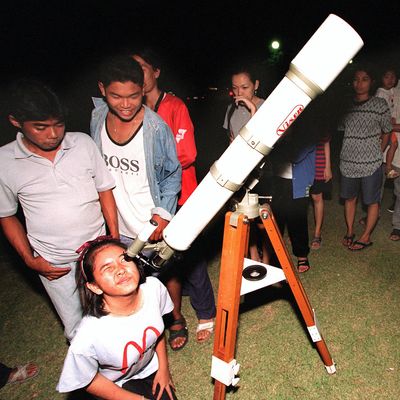
If you’re looking for a gift for the space enthusiast or backyard astronomer in your life — you know, the person who always insists on pointing out the Big Dipper or Orion’s Belt — you might not know where to start. A telescope might seem like an obvious choice (if you know they don’t have one, consult our guide to the best telescopes for beginners) but if you’re looking to spend a little less, there are plenty of other stargazing-related gifts that are sure to please. To hear about which ones will be best received, we reached out to four astronomers, who they told us about various books, star maps, clothes, and jewelry — as well as the one thing to never get the backyard astronomer in your life. “I would not recommend buying or naming a star after them,” says Rick Bria, vice-president of the Astronomical Society of Greenwich. “That is a gimmick.”
Telescopes and binoculars
“One of the most common questions I get is ‘Which telescope should I buy for my son/daughter/husband/wife/friend?,’ says Rick Fienberg, Press Officer for the American Astronomical Society. “Let’s not even go there, because there are so many options, and most of them cost hundreds to thousands of dollars, plus one of the best ways to kill someone’s interest in astronomy is to get them a telescope that’s too complicated for them to use and causes them to give up.” If you want to give them an accessible option, Fienberg told us binoculars — “halfway to a telescope” — are the way to go. “They show you tons of stuff you can’t see with your naked eye but are vastly easier to use than a telescope,” says Fienberg. “They let you comfortably use both eyes, they’re easy to aim, and they show a right-side-up view, whereas telescopes usually show the sky upside down or mirror-reversed, which can really confuse beginners.” Bria agrees: “A good pair of binoculars is a complement to a telescope. Some objects in the sky are too big to fit in the view of the telescope. That is where binoculars really shine.” These Celestron binoculars are a favorite of Strategist contributor Steven John, who wrote that they “let me see details on the surface of the moon I thought were reserved for Apollo astronauts.”
If you are set on buying an actual telescope, this one came recommended to us by Mary Odekon, an astrophysicist and professor of physics at Skidmore College, who, when we asked her about the best telescopes for beginners, told us “a Dobsonian telescope ensures enough magnification to see the rings of Saturn (looking tiny, not large — but definitely like rings!) and the moons of Jupiter, which are visible even from a city.”
Books and magazines
Sky & Telescope is one of the best known astronomy magazines out there, and is a great place to start with someone who wants to read up on the stars. Founded in 1941, and celebrating its 80th birthday next year, the magazine has all the latest news about astronomy and the community of hobbyists and scientists who love it. Fienberg (who works for AAS, which now owns the magazine) calls it the “‘bible’ of astronomy” and says in its pages you’ll find how to use star charts, find the right telescope for you, or choose a pair of binoculars.
Another star-gazing tome: this well-known reference guide that includes maps to the stars and constellations you’ll see in the sky on any given night. It includes illustrations, as well as historical facts.
We’d be remiss to forget the astronomy-loving child in your life, for whom Fienberg suggests the Max Science Adventure series, which chronicles the adventures of Max the dog and a young girl named Tori. In this book, the duo go to the moon for the first trip since the Apollo era — a trip so inspiring to those back home that all of the nations on Earth band together to build a moon colony.
Star finders and tools
“A key tool in every stargazer’s toolkit is a planisphere, or star wheel,” says Fienberg. “It’s a multilayered plastic or cardboard disk that lets you dial in the current date and time and then shows you a map of the naked-eye sky at that exact moment.” Fienberg says it’s ideal for getting a general sense of what constellations are overhead and for tracking down ones in particular. It would also be a handy tool to use in conjunction your binoculars: “Bigger, more detailed versions typically include not just naked-eye stars but also the positions of some of the brighter ‘deep-sky objects’ visible in ordinary binoculars and small telescopes — these include star clusters, galaxies, and nebulas,” says Fienberg. His preferred planisphere is sold by Sky & Telescope magazine (full disclosure: Fienberg used to work for S&T, and the American Astronomical Society now owns the magazine). “Admitting my bias, I favor the planisphere’s produced and sold by Sky & Telescope, because they are based on the same sky maps used in the magazine, which are very carefully designed to match the naked-eye view of the sky as closely as possible,” he says. “Any given planisphere works only for a limited range of latitudes (because as you go farther north or south, your view of the sky changes noticeably). There are planispheres covering all the latitudes of the continental US, and also a smaller $13.95 one that shows fewer stars and is better suited to smaller hands and city observers.”
If your stargazer could use a little (automated) help finding the constellations, the SkySafari Pro app, says Bria, is “a great thing to use with your telescope to find particular objects in the sky.” They can download to their iPad, and use it both for finding and identifying stars, but also to read up on what they’re looking at. “It is a treasure trove of information,” says Bria. Fienberg is a fan, too: “My personal favorite app is SkySafari, which is available for as little as $2.99 — I use the more expensive Pro version, which lets me control my telescope with my phone,” he says. There’s plenty within the app to keep the recipient busy: According to the SkySafari description, the program “has the largest database of any astronomy app,” including “every solar system object ever discovered.”
“If you’re able to find a reasonably dark observing site with no bright lights around, you’ll soon find that you can see a lot more in the sky,” Fienberg says. “But as soon as you look at a bright light, your dark adaption will be ruined and you have to start all over again.” Our eyes are much less sensitive to red light, though, meaning that this tiny LED flashlight with a red lens will make it much easier for the stargazer to consult their star finder chart without throwing off their ability to see in the dark.
Home goods
Dr. Jarita Holbrook, astronomer and associate professor of physics at the University of the Western Cape, did her PhD work on the Orion Nebula and told us that her favorite Hubble Space Telescope image is of said nebula (she also produced a documentary about minority astrophysicists and their relationship to the Hubble Space Telescope, which you can find here) says that on vacation she likes to do puzzles — and recommends, in particular, this one that depicts the Hubble Space Telescope itself.
Astrochemist Ashley Lindalía, Undergraduate Research Associates in Astrobiology Intern at NASA, told us she once received a mug that looked quite similar to this one once, and loved it. “When the mug is cold, you can only see the stars, and then when you pour hot coffee into it, you’ll see the constellations.”
Clothes and accessories
Holbrook told us that June 22-28 is now officially #BlackinAstro week, a movement meant to highlight the work of Black astronomers and how racism affects their experiences in the field. If you want to help someone celebrate #BlackinAstro and also support small, Black-owned businesses, Holbrook suggests this hoodie, created by physicist Trina Christian Coleman for STEM Skills, a program that suppors students interested in STEM careers. “I’d want this hoodie (always an acknowledgement to Trayvon Martin!),” says Holbrook. “Each can be customized by color and scientific discipline, including astronomy, physics, biology, and chemistry.”
“Who wouldn’t want a cool t-shirt that has astronomy stuff on it?” says astrochemist and NASA Ashley Lindalía, Undergraduate Research Associates in Astrobiology Intern at NASA. “You can find them on some planetariums online shops — I got this one, that says, “When I was a kid, there were nine planets,” from Adler Planetarium.” Lindalía also suggests checking out the STARtorialist for more science-inspired clothing gifts.
If you’re shopping for someone who’d prefer jewelry, Holbrook suggests browsing the UNICEF shop. “I like gifts that both support a cause, and are celestially themed,” she says. For someone who, like Holbrook, has “a healthy appreciation for solar eclipses,” try this pendant. “This captures the moment when the sun is completely covered and the solar corona is visible,” she says.
Holbrook also recommends the constellation pendant necklaces available from UNICEF, should you happen to know the recipient’s favorite. “Orion is my favorite constellation and one of the most recognizable ones,” she says. “It’s hard to find non-zodiac constellation goods.” The pendants are made from sterling silver and hang on a waxed nylon cord
The Strategist is designed to surface the most useful, expert recommendations for things to buy across the vast e-commerce landscape. Some of our latest conquests include the best acne treatments, rolling luggage, pillows for side sleepers, natural anxiety remedies, and bath towels. We update links when possible, but note that deals can expire and all prices are subject to change.
